
November, of last year, I sat down to try my hand at relief printmaking. I thought it would be a one-off experiment, a stop-gap until I could access etching baths again. I love intaglio, the process of it, the amount of waiting, planning, and consideration it requires. The details that can be achieved with an etching needle make my heart race, and yet, the immediacy of relief printmaking is so rewarding.
My introduction to printmaking began abstractly. Both intaglio and monotype taught me valuable lessons about allowing the process to simply be. When working with monotype, it may look one way on the plexiglass, but entirely different once printed. It was first explained to me like this, “You may use the same process, the same inks, the same solvents, paper, etc., day in, day out, you will never make the same print twice.” This appealed to me as someone new to the art world at the time, I didn’t need to stress about monotypes because it will be, what it will be.
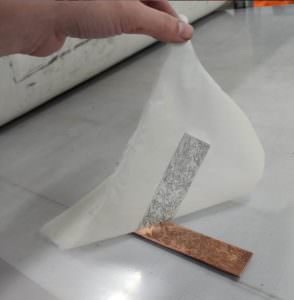
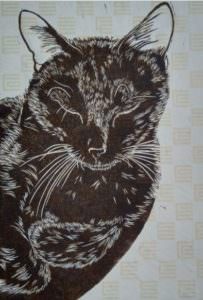
“You may use the same process, the same inks, the same solvents, paper, etc., day in, day out. But you will never make the same print twice.”
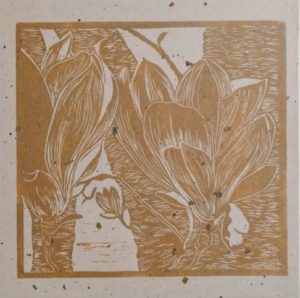
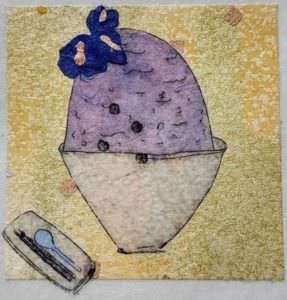
Intaglio offered a way to reproduce the same image again and again. I learned monotype before an intaglio crash course in the summer of 2014. My approach to intaglio was more laissez-faire. If there was a foul bite (such as the four deep circles in my kakigori print to the left), it simply became part of the print. The stronger my confidence in my drawing skills, the more frustrated I became when a line didn’t etch the way I hoped.
So much happens during the intaglio process that can’t be entirely predicted, most taking place inside the acid bath which can’t be realized until the plate has been removed, cleaned, and proofed. With relief printing, the moment I finish carving a line, I know whether it’s turned out or whether I need to adjust something. Intaglio taught me to be patient and trust (or just accept) the process. Relief gives me the freedom to work fast and print often.
Relief and Intaglio Work in Opposites – In etching/intaglio, your image is created from below the surface of the plate, your negative or etched space is what shows up in your design. For etched prints, you force ink into grooves you’ve created while buffing the surface clean of excess ink. Time-consuming for a large etched plate, it’s laborious. Whereas with relief printmaking the image is on the surface area carved which is inked with a roller – the carved area is the negative or un-inked areas. The one thing that is true for both types of printmaking is the way the lines appear before the first proofing. With fine details, like the fur on my recent cat prints (see image above), which appear before the block is even inked.
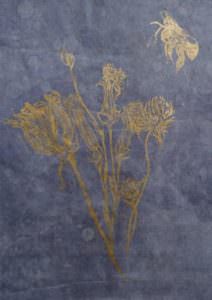
After admiring other relief printmakers’ work for years, it’s joyous to find that I’ve taken so well to this style of printmaking. My drawing comes through more clearly than with intaglio and I’m not tied to a press. Thanks to water-based inks, I can print anywhere, as long as I have a flat surface. A whole world of opportunities has opened itself through relief printmaking, from residencies not equipped for printmaking to printing while on vacation or traveling.
There are papers to be explored that simply would not have lent themselves to etching that is wide open to relief. Etching presses the ink into the fibers of the paper, relief sits on top of those fibers. Lokta, leaf embedded papers, and heavily textured papers will become part of my visual language, adding a new richness to the Asian paper catalog I’ve slowly constructed for myself. As work progresses, I build upon skills, ready to enter unchartered waters of large-scale pieces.
Mimi King on PCI papers that tell your story

